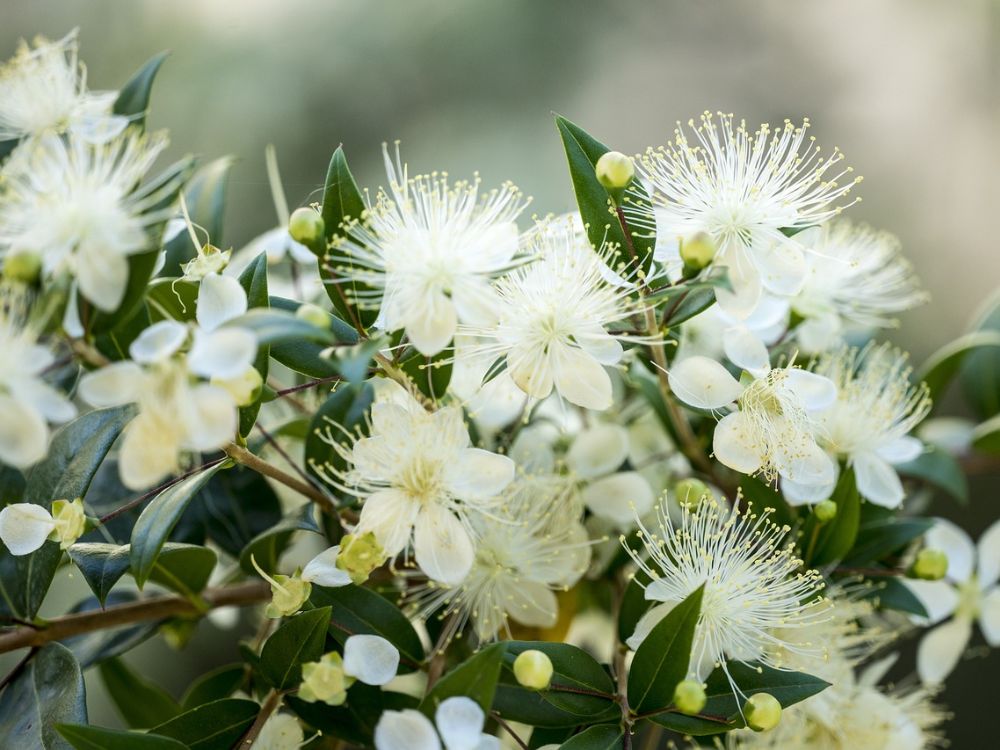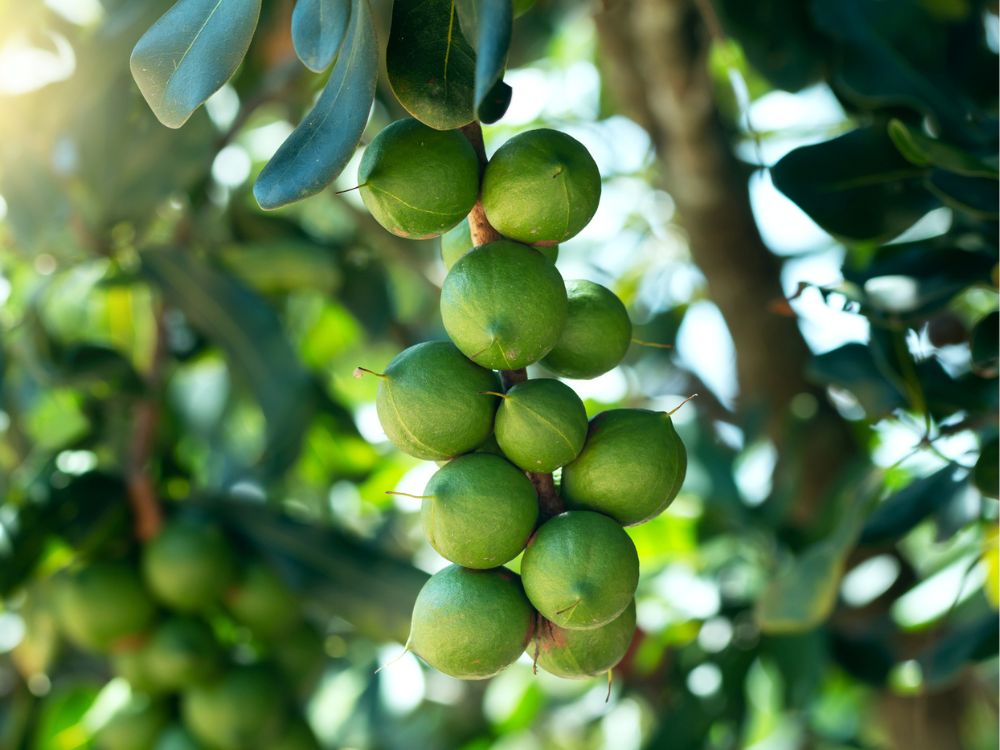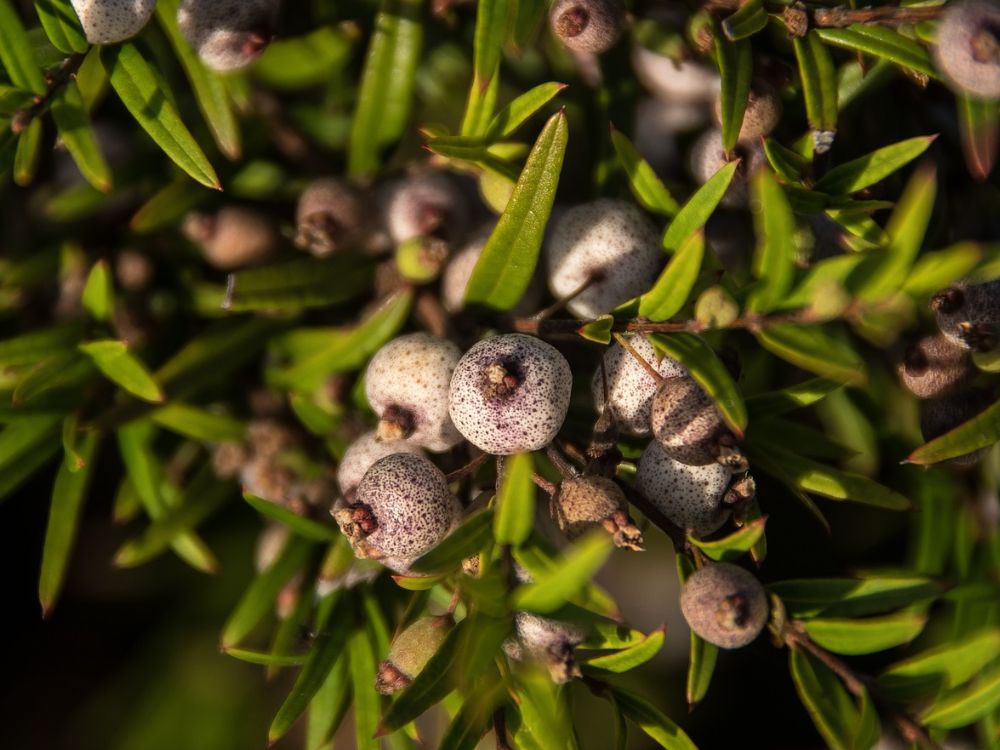Australian Bush Tucker plants aren’t just any plants; they’re a part of Australia’s rich heritage, used by Indigenous Australians for centuries and still enjoyed today. From the fragrant wild oranges to the lush green cover of local natives, these plants are a testament to Australia’s diverse flora.
What if you could bring a piece of this rich history into your own garden? Imagine the satisfaction of growing these landscaping plants, not just for their beauty but also for their edible benefits.
Whether you’re a seasoned gardener or a novice, this journey into Bush Tucker plants promises to be an exciting one.
Popular Bush Tucker Plants in Australia
Australia’s native flora isn’t just beautiful; it’s also packed with delicious bush tucker plants. Here are some of them that you can grow in your backyard and add authentic Australian flavour to your meals.
Davidson Plum
Native to the Australian rainforests, the Davidson Plum tree offers deep purple, plum-like fruits. These fruits give a tart flavour, which complements jams, sauces, and even desserts perfectly. Its preference for free-draining soil makes it a fantastic choice for many Aussie gardens.
Lemon Myrtle (Backhousia citriodora)

Known for its strong, lemon scent, the Lemon Myrtle is a popular choice for gardens and kitchens alike. Its leaves make a refreshing tea or a tangy ingredient in your cooking.
However, keep these native Australian trees in well-drained areas, as they can be susceptible to root rot.
Macadamia Nut

A famous Australian export, the Macadamia tree is a welcome addition to any garden. Besides offering delightful nuts, it also attracts beautiful native fauna to your backyard.
Lemon Aspen (Acronychia acidula)
Lemon Aspen trees can turn your garden into a tropical paradise. Its small fruit gives a unique citrus tang, making it a superstar ingredient in many Aussie recipes. Remember, they relish sunshine and can withstand long dry periods once established.
White Aspen (Acronychia oblongifolia)
The White Aspen fruit, similar to Lemon Aspen, imparts a distinct zestiness to meals. Growing this tree may well require a bit more patience, as it thrives best in the company of other trees.
Midgen Berry (Austromyrtus dulcis)

Small but powerful, the Midgen Berry bush rewards your effort with sweet fruit perfect for jams or eaten as is. Growing this plant adds a certain native charm to your garden.
Muntries (Kunzea pomifera)
Manageable and adaptable, Muntries bushes are a great starting point for novice horticulturists wanting to experiment with native plants. Their berries can add a unique apple flavour to your meals.
Aniseed Myrtle (Syzygium anisatum)
With its leaf boasting of sweet, aniseed flavour, this Myrtle variant can be a real game-changer in your cooking game. Plus, its white, starry flowers can brighten up any garden.
Rosella (Hibiscus sabdariffa)

Rosella flowers don’t just make for a stunning view but also offer a cranberry-like flavour, ideal for teas, sauces, and jams.
Scrub Cherry (Syzygium australe)

Scrub Cherry trees are ornamental Australian shrubs and produce fruits with a hefty dose of Vitamin C. Their robust nature means they can withstand a variety of Aussie climates.
Burdekin Plum (Pleiogynium timorense)
This close relative of the Mango provides juicy, purple fruits that need a few days to soften and mellow. Once ready, they offer a prune-like flavour with a hint of Davidson Plum. Keep in mind; the plant prefers free-draining soil and lots of sunshine.
Cultivating Bush Tucker Plants at Home
Let’s plunge into the heart of creating a piece of traditional Australian heritage right in your backyard by growing Bush Tucker plants. This section imparts valuable insights on essential conditions and challenges involved in cultivating these plants.
Essential Conditions for Growing Bush Tucker
Bush Tucker plants are unique, with each demanding varying conditions for growth, depending on aspects like sunlight, soil type and pH, and watering habits.
For example, the Screw Pine prefers areas with full sun exposure, well-drained soils, and frost-free conditions. Meanwhile, the Lilly Pilly, native to the East Coast, endorses a range of soils, savouring regular pruning and flowering that results in a more compact bush.
Challenges and Solutions in Cultivation
Despite their adaptability, cultivating Bush Tucker plants can present a few challenges.
Take the Screw Pine, for instance. It may take up to 20 years for the trees to bear fruit and need at least three seedling trees planted together for successful pollination. Plus, they can be affected by Jamella Australiae insect infestation.
However, getting your stock from nurseries that are free of this pest, like Daleys Fruit Tree Nursery, can evade this issue. Regular pruning for plants like the hybrid Lilly Pilly and using leaves for culinary purposes can also promote overall plant health.
By understanding each plant’s unique characteristics, you can triumph over these hurdles and peach blossoming Bush Tucker plants thriving in your garden.
Image by [email protected] – YK1500/depositphotos
